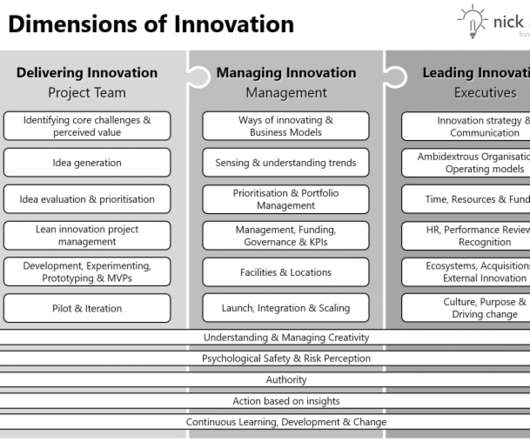Key Issues in Innovation Management – Revisited – Part 1
Tim Kastelle
MARCH 7, 2016
At the beginning of 2013, Tim Kastelle and I identified four key issues in innovation management for the time to come. Let’s have a brief look at each of them: Differentiating and integrative innovation concepts. We can see that experimentation comes in different flavors, depending on the innovation context.















Let's personalize your content